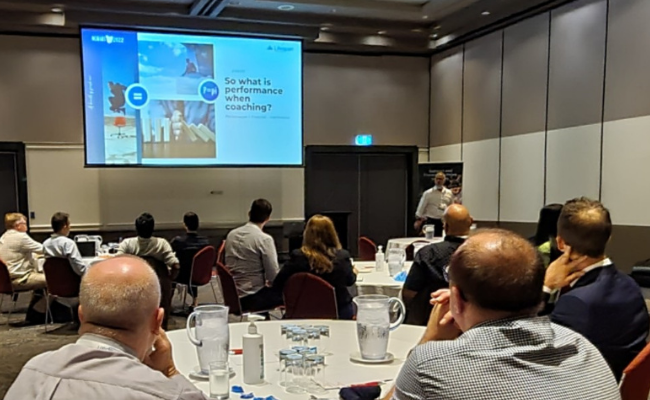Dear Anthony and Scott
With the Federal Election rapidly approaching, I felt compelled to put pen to paper to highlight the issues that continue to plague the financial advice community.
This upcoming election is looking like a tight race, and whoever assumes power on May 21 will significantly influence the financial services sector, and every Australian’s opportunity to access to quality financial advice for years to come.
The financial advice community has been decimated over the past few years, with only 15,000 financial advisers expected to be practicing by the close of 2022, from a peak of almost 30,000[1]. Australians are abandoning advice and advisers are being forced to cut ties with clients who cannot afford to pay significant fees, with over 100,000 less receiving financial advice than 12 months ago[2]. According to Adviser Ratings, most of those people no longer receiving advice, are aged 35-54 years, and it is going to be a major challenge to reintroduce the value of advice down the track to this segment.
We are at a critical crossroad, with an aging population, and the “Great Australian Wealth Transfer” on our doorstep, or potentially already here. Access to quality financial advice has never been so important, however, if we do not seek significant change, many will not be able to access affordable advice from a professional financial adviser.
Government has not recognised the advice community as the profession that it has now become, and therefore not provided the trust that our profession deserves, after years of jumping through hoops and navigating constantly shifting regulatory goalposts.
Here are four key issues that I believe need to be addressed by the incoming government.
Legislative certainty and stability
We need a measured, long term view when it comes to financial advice regulation. Ongoing change and upheaval has left licensees, and advisers battered and bruised. We need the space to breathe and embed existing compliance requirements. We need the opportunity to consolidate and support advisers to build sustainable advice businesses so that they can continue to deliver quality financial advice for many years to come. In practice, this means a commitment to not increase compliance requirements for some time and where appropriate, to reduce some of these compliance requirements. This is not only important to existing advisers but is critical in attracting new entrants. There are currently low numbers of entrants into the advice profession, and we need to work on making a career in financial planning more desirable, as adviser numbers will continue to decline over the coming years. To achieve this, we desperately need to demonstrate stability.
Address the fundamental issues affecting advice affordability
Currently, there exists a clear disconnect between the cost of providing one-off advice or advice to new clients, and the price consumers pay for that advice. The sheer amount of disclosure and record keeping documentation required is overwhelming and a major administrative burden for many advice practices. Most advisers absorb much of the costs of onboarding and advising new clients, which is not sustainable in the long term. Absorbing some of these costs will be viable if the compliance and administrative burden of ongoing advice arrangements are simplified, however, to reduce these costs, we need to simplify the advice process. Some practical suggestions to achieve this would include:
- File keeping requirements need to be simplified and Safe Harbour abolished
There are few other professions where there exists such a high burden of proof for an adviser to demonstrate the appropriateness of their advice. In most other cases, inappropriateness generally needs to be demonstrated for them to be sanctioned or found liable.
Shouldering this burden of proof has resulted in convoluted and complicated file keeping and disclosure requirements, which in turn increases the cost of providing advice. Perhaps a more moderate framework needs to be considered and abolishing the Safe Harbour provision would go a long way to achieving this.
- Advice documents need to be simplified
Statements of Advice (SOA) should serve the purpose of educating and informing clients about how the advice provided meets their goals and objectives. At present, SOAs are too lengthy and often difficult for the client to understand. They are effectively compliance documents, but they have the potential to be so much more! Therefore, the SOA framework needs to be significantly simplified and this will make for more informed clients as they are more likely to read and understand the advice provided.
- Financial Disclosure Statement (FDS) should be abolished
Client fee consent every one or preferably two years should be sufficient. If a client is unhappy with their service and advice, they simply will not renew their consent arrangement. Why have an extra piece of confusing disclosure, which adds no real value to the adviser, or the client?
We need to stop perpetuating mistrust in financial advisers
The reputational denigration of financial advisers needs to come to an end. We have held up our end of the bargain (meeting education standards and fee consent requirements, just for starters), and we need support from the government to rebuild consumer perception regarding the value of quality financial advice.
Continue to provide certainty in the superannuation system
Superannuation is the largest investment for many, outside of the family home. The superannuation system must continue to serve its purpose in ensuring that Australians have security and financial independence in retirement. Superannuation legislation needs to be viewed with a long term lens, and not as an election sweetener.
It has been positive to see that the communication coming from both parties demonstrates a desire to reform the financial advice framework to be less onerous and more affordable in the lead up to this election. I learned a long time ago to judge people and governments by what they do rather than what they say. This new term of government should serve as an opportunity to rebuild trust with the advice community and recalibrate financial advice regulation, learn from the mistakes made, and seek to ensure that the financial advice profession is in the best position to continue to provide quality advice to those Australians that need it.
[1] Adviser Ratings AR Landscape Report, April 2022
[2] Adviser Ratings AR Landscape Report, April 2022









